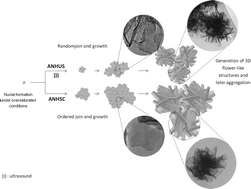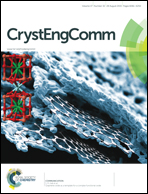Influence of ultrasound on the instantaneous synthesis of tridimensional α-Ni(OH)2 nanostructures and derived NiO nanoparticles
Abstract
Nickel hydroxides present an extraordinary importance in the development of electrochemical devices. In contrast to the use of ammonia as a direct precipitating agent, we present herein the instantaneous precipitation of α-Ni(OH)2 nanopowders by the addition of a nickel salt to an ammonia solution. The synthesis is based on the oversaturation of the solution in the absence of any additive or other metallic cations, where ammonia plays a role as a complexing agent for intermediate nickel compounds. The influence of ultrasound on both the microstructure and the crystalline structure is discussed and the differences are referred to a new parameter (S parameter) which quantifies the amount of power in watts per cm2 that a mol of [Ni(NH3)6]2+ experiences. The description of the nucleation and growth processes of the different powders studied led to the understanding of the effect of ultrasound on the crystallography of α-Ni(OH)2. The porosity of the samples is also evaluated and its percentage and type are also correlated to the synthesis conditions. The transformation of α-Ni(OH)2 to NiO is also considered and their optical properties are evaluated as an initial indicator of their promising use as electrochemical devices.


 Please wait while we load your content...
Please wait while we load your content...